Building for Simplicity - My Take on a Meshtastic Enclosure
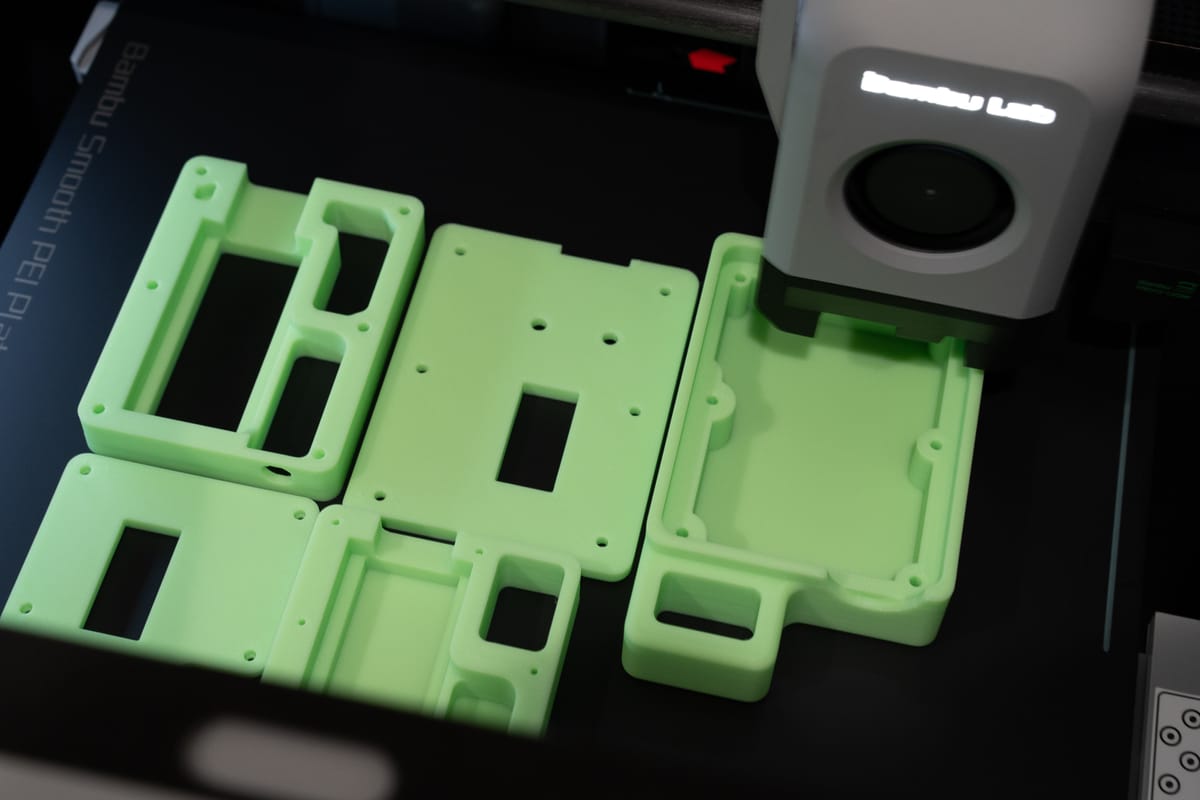
If you haven't heard, Meshtastic is software for wireless mesh communication over LoRa frequencies. Some builds use their own screen and keyboard, many often just use the Meshtastic apps for either iOS or Android and talk to the Meshtastic device over bluetooth. That's not what I'm here showing you today- it's the recent explosion in handheld designs for the hardware. To save you a click, paid subscribers get access to all my STL files for as little as $5 a month- one month minimum. So I'm not on any pedestal shaming anyone for selling their designs.
The (Former) Problem
I started my builds a couple months ago after more than a year of frustration with freely available Meshtastic 3D printed enclosure designs. Despite a few excellent printers and very stable filament, I just couldn't get the existing designs to print- they seemed overly complex, needing too many supports, and overall a bit too clunky for me- which is funny because my one of my own designs is quite the chunky one.
This isn't as big of an issue as it once was, with a whole bunch of new takes on enclosures- from the creative budget-but-tough ones to cool outdoor repeaters including some military style ones that I love. If you're from the South you'll know the phrase "bless your heart" which is how one might describe this build, where they really push the boundaries of the Creative Commons license with a broken CC link, no mention of the author, and a hefty price tag for essentially just printing a case. For the record, the model I sell access to is CC Non-Commercial, so you are free to mod and share it- but if you want to sell it for some crazy reason you gotta reach out to me for terms.
Either way, people are making all kinds of new cases and it's awesome. Here's my take. I started with a simple LILYGO T-Echo with a custom antenna from ZBM2 Industries.
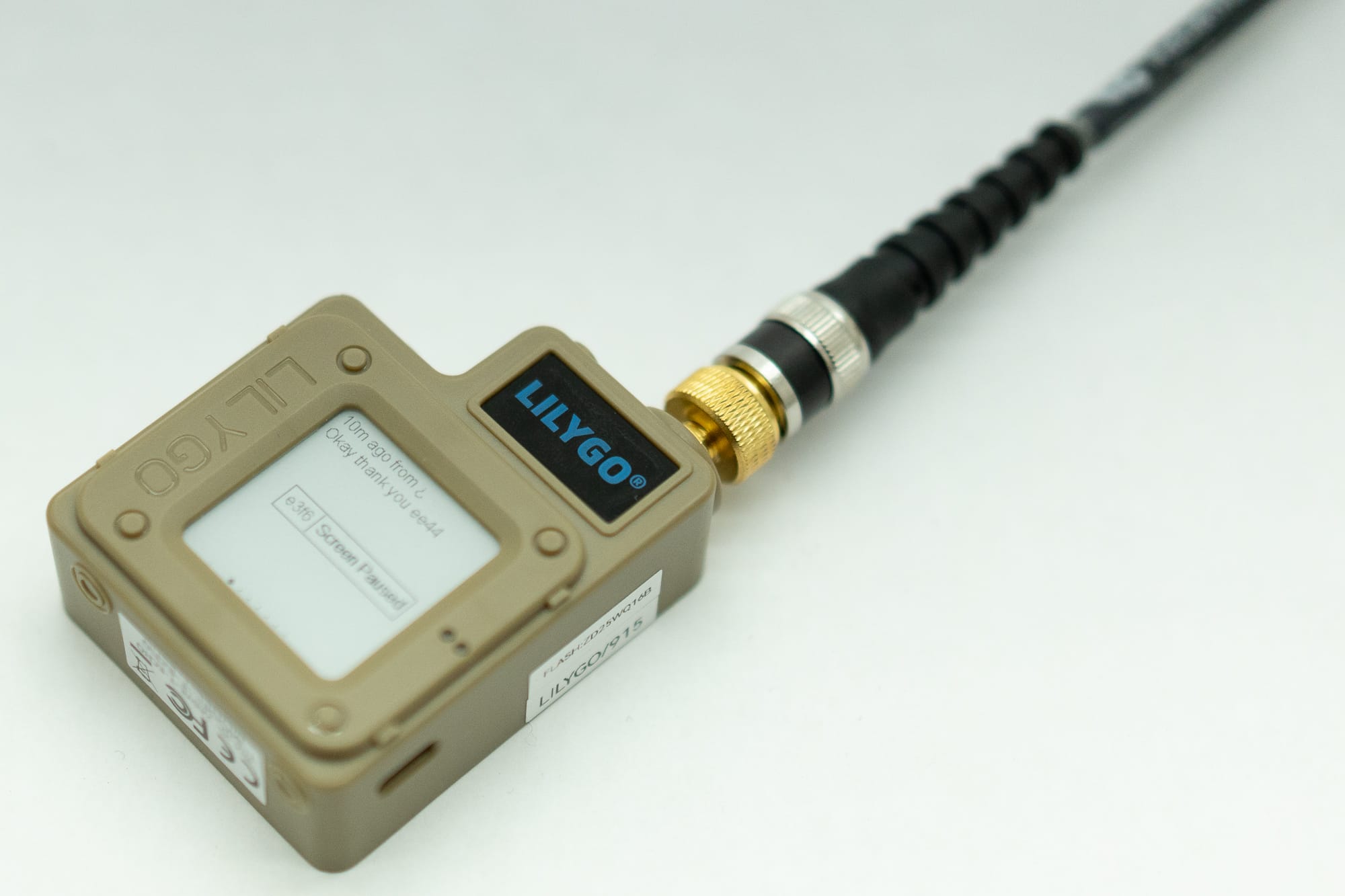
It's OK and does the job, but the case is really thin plastic and I decided I just don't need the GPS in the unit. While the eink is nice, I found it more or less irrelevant for anything other than troubleshooting, since I was using the mobile app or the extremely cool web consoles of client.meshtastic.org and flash.meshtastic.org. Both are available as docker images for those who want to self-host too!
I chose the Heltec V3- the battery life isn't known to be as good as the newer Rak platform, but these are easy to get, and the case was easy to make. Maybe a Rak case is next?
The Battery 3000
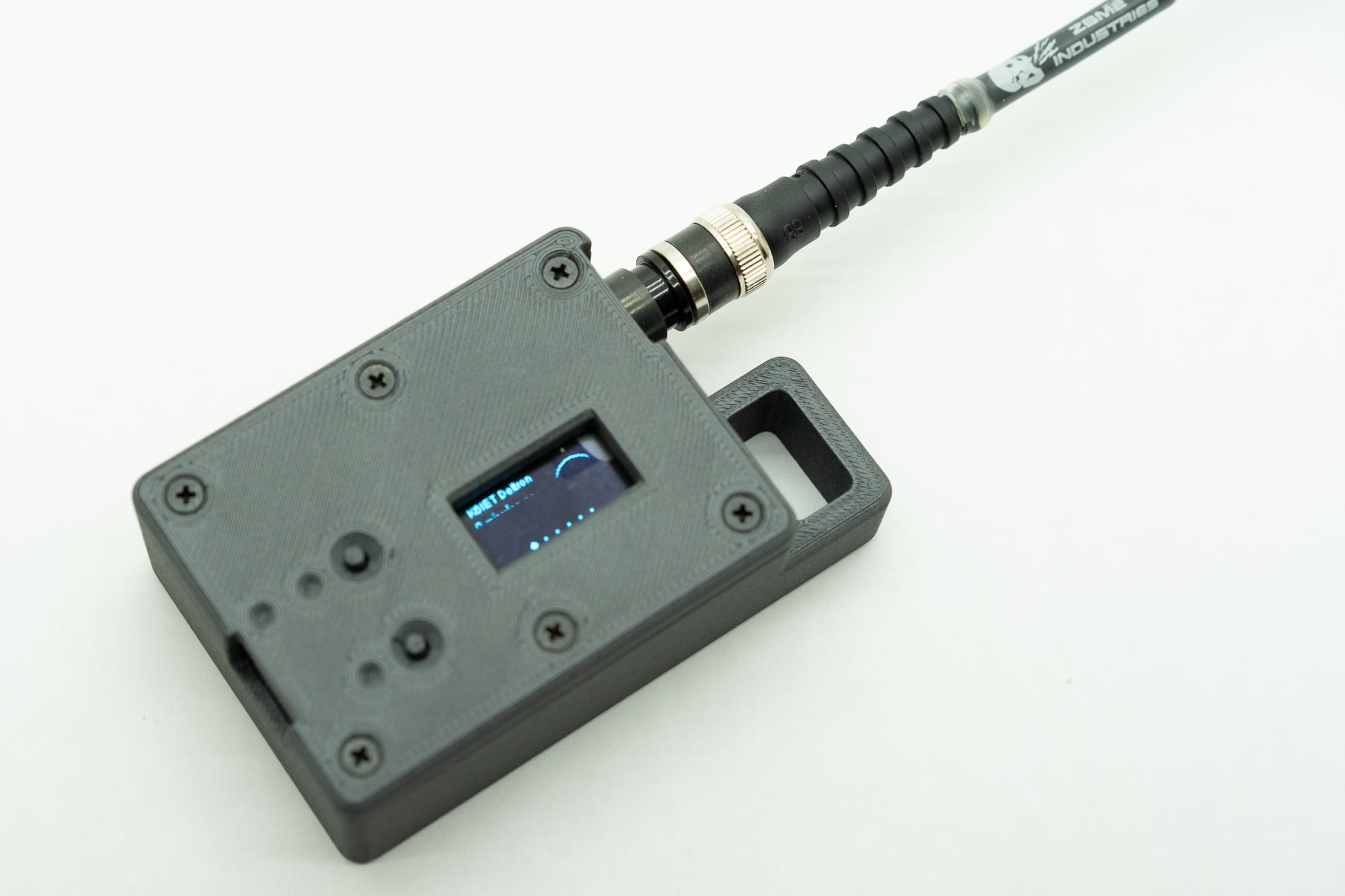
I wanted a large battery, but even more than that I wanted a build that was dead simple to print, felt good in the hand, and looked at home with my other projects. I went with some M2.5mm screws, and the ones on the front are the only ones you need. It's thick at 32mm, or about 1 1/4". I designed a simple but tough loop on the top, and a simple pass through tunnel for the USB C connector. These aren't weatherproof, but they will hold their own tumbling around in a bag. Here's a CAD animation of the parts:
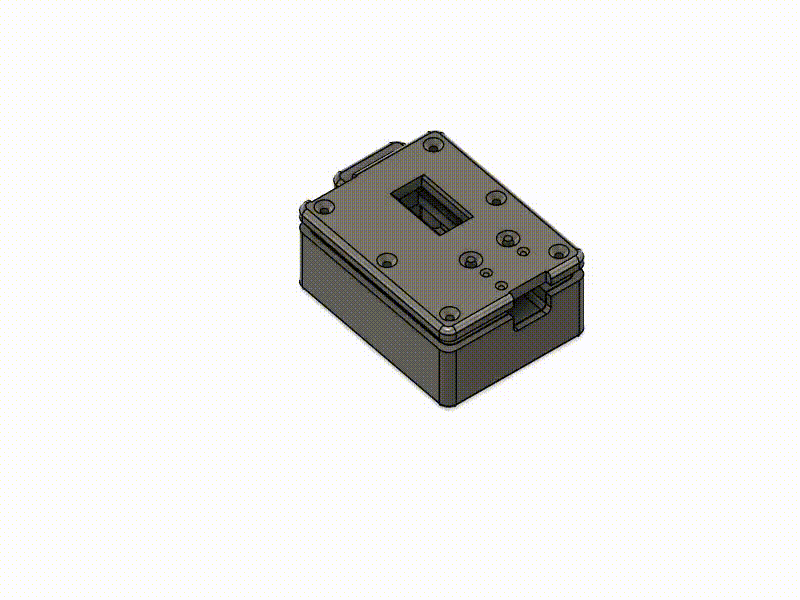
As you can see there's a simple bottom, a middle chassis, a lid, and two buttons. You can make the buttons taller to protrude more, or shorter (including making the base shorter if your printer tolerances are different from mine). No supports, works fantastic in PLA or PETG. The M2.5 screws are Philips head though- the hex drive ones are too fragile for the pressure-fit screw holes I use. The parts list for this build is simple:
- Makerfocus Heltec v3 915mhz (USA) board with SMA antenna adapter - Amazon
- Makerfocus 3000mAh battery - Amazon
- M2.5x20mm Philips head screws - McMaster Carr
- ZBM2 Industries whip mesh antenna - ZBM2 Industries
- SMA to BNC Adapter - ZBM2 for the cool black one
The Suction Mini
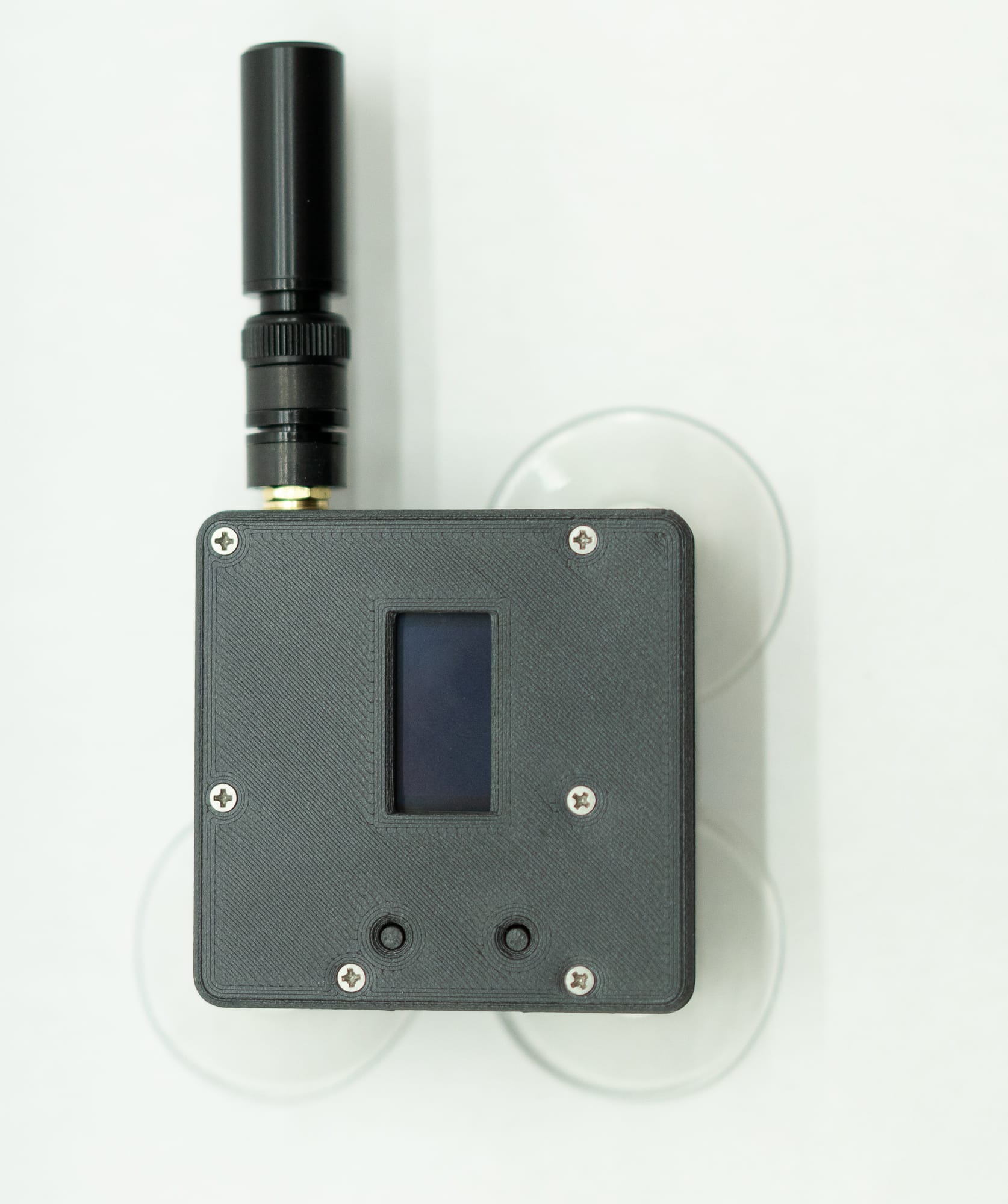
This is a build I had been trying to do for some time, and I kept trying to work on something that could excel on a truck's roof rack, but the antenna, power, and weather sealing were all things that need a ton of attention to do right. Then it hit me- I could have something live inside the vehicle! I dropped the battery and made a case with slightly wider proportions to make room for suction cup screws. It's simple really, it suctions to a window in the cab, runs off a USB port in the car, and turns off when the car turns off. Longer sessions like camping can just us a portable battery. I am sure I am taking a hit on radio transmission distance from placing the unit inside in the cab, but it is working for my needs. Just remember- if you do something similar, don't set it as a router in Meshtastic- set it as a client, the mesh works more efficiently that way.
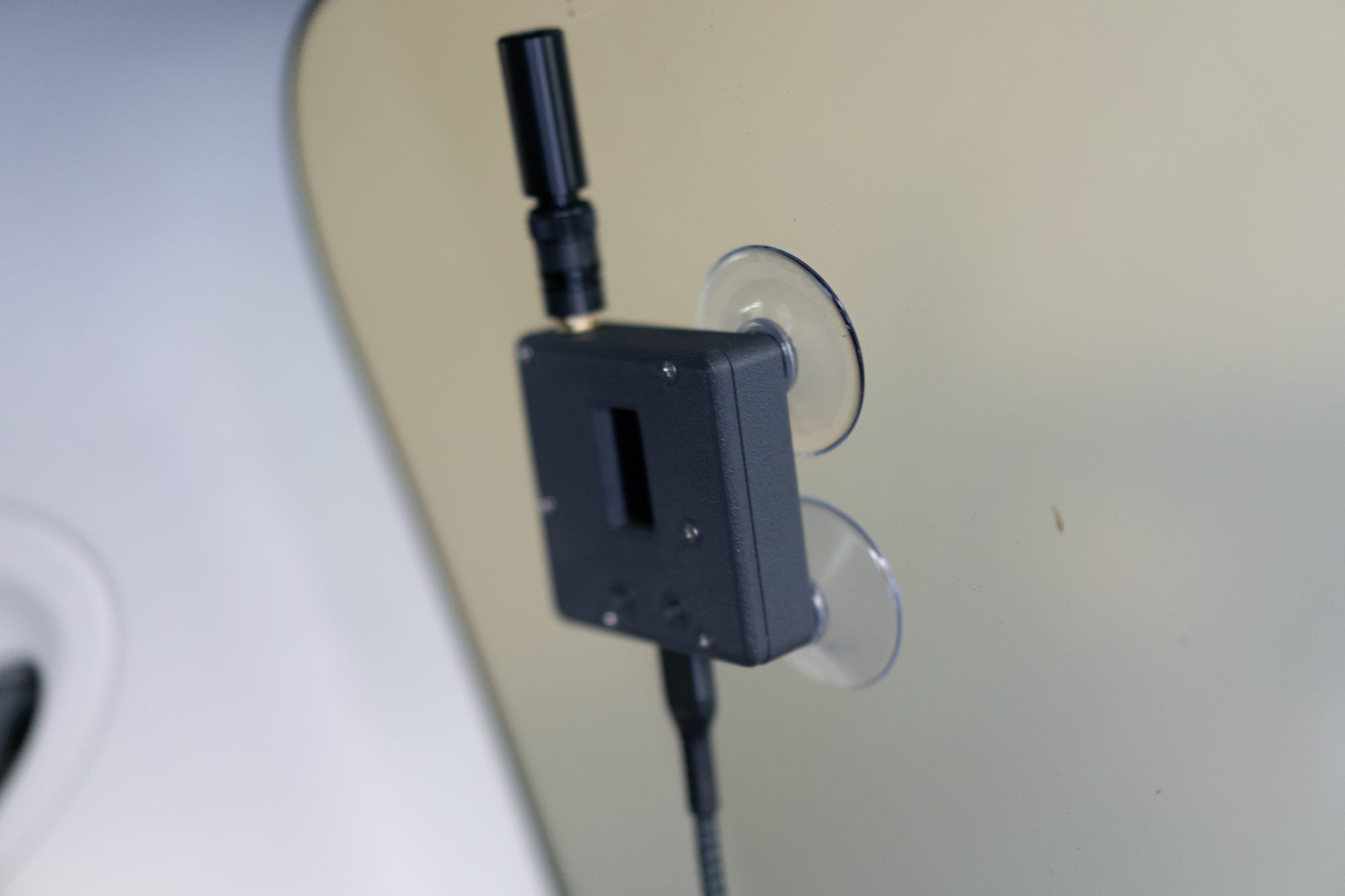
This design also doesn't need supports, you can even print the lid inverted to get the smooth finish from the build plate. The build is still pretty simple, with only a top and bottom. It still retains the general interior dimensions as the larger build, and the holes are the perfect size to hand-screw the M5 suction cups on. The antenna cable needs the space where the fourth suction cup might go, but the 3 seems fine to prevent wobble or rotation.
This version used the following parts:
- M5 screw suction cups - Amazon
- Makerfocus Heltec v3 915mhz (USA) board with SMA antenna adapter - Amazon
- M2.5x12mm Philips Head Screws - McMaster Carr
- Stubby Mesh Antenna - ZBM2 Industries
- SMA to BNC Adapter - ZBM2 for the cool black one
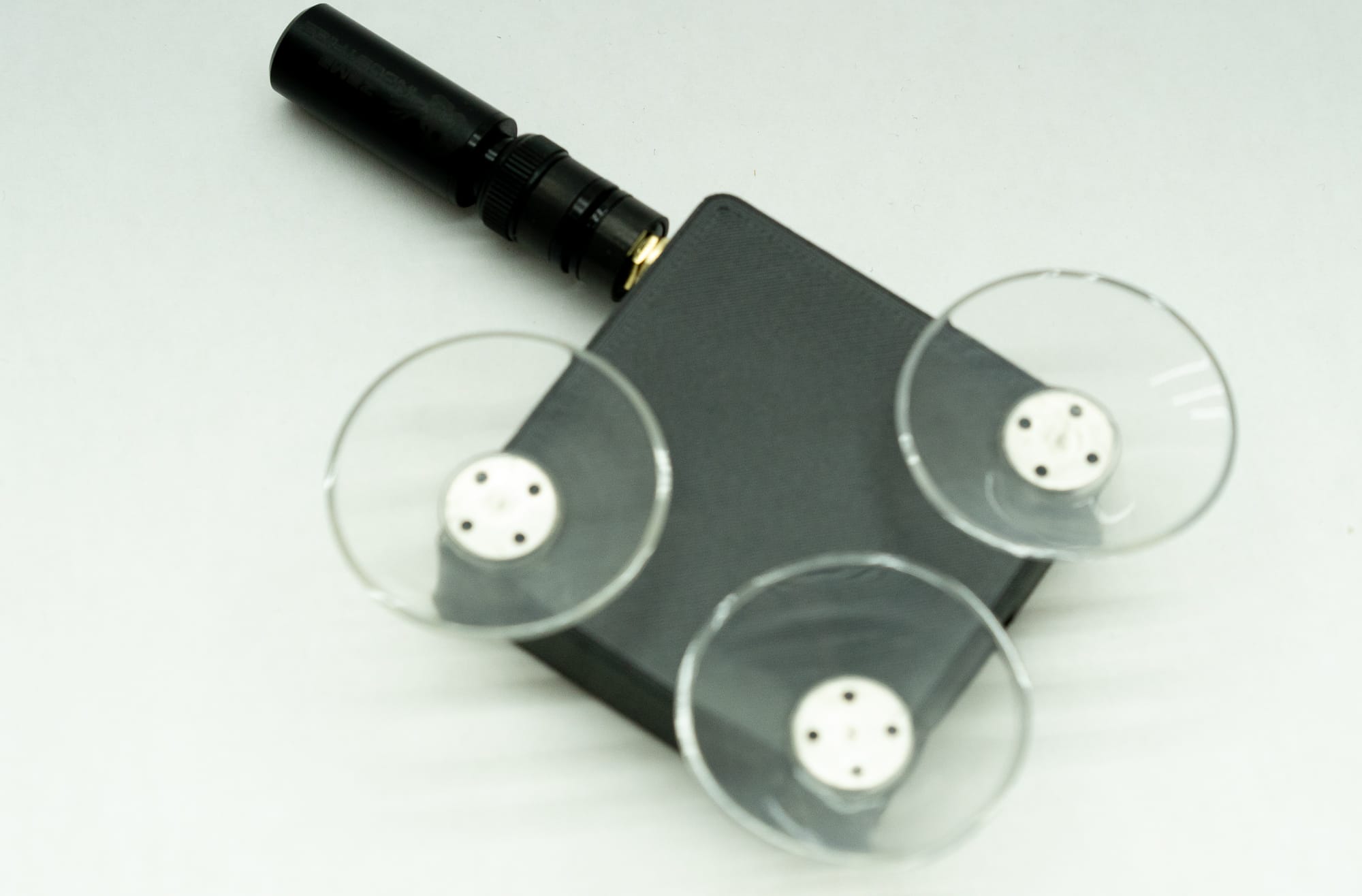
Simple Designs
I am really excited to see the evolution of the cases for the Meshtastic radios in the months and years ahead, and I think it's a good space for people to really work through exploring norms around selling products and designs. My site really focuses on offsetting the design process for my builds, and each business pursuit will be different. I think people should get some leeway as they figure out how to modify and sell designs within each creator's license structure.
Overall if I had to make any predictions, it would be that simple, easy to print designs will win out- just based on the rapid growth of 3D printing that we see today. There will always be a spot for the ultra-cool and weatherproof builds, but simple is optimal when we're talking about radios to use when the grid isn't available.
Thank you to all my paid supporters! The STL files for printing can be found here, and the CAD design files can be found here.
Comments ()